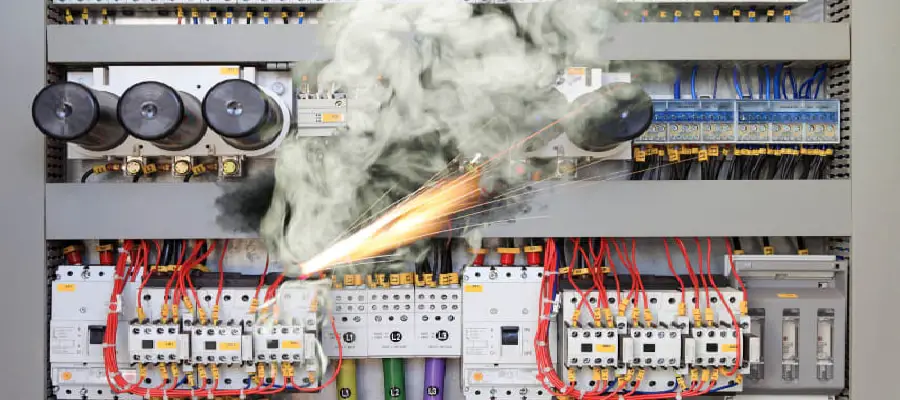ELECTRICAL RISK ASSESSMENT
What is an electrical risk assessment?
An electrical Audit provides a detailed review and inspection of the electrical connections and wiring installed in a home. Additionally, electrical checkups help stop fire damage, which causes many deaths, injuries, and property damage every year.
Cause of Electrical Risk / Hazards:
- Old or poor wiring.
- Incorrect wattage light bulbs.
- Too many power strips and outlets.
- Unprotected electrical outlets.
- Use of extension cord in an improper way.
- Operate an unsafe appliance.
The Five main Electrical Risks are:
- Toch with power.
- No ground fault protection.
- Ground passes are missing or discontinuous.
- Equipment not used in the manner prescribed.
- Improper use of extension or flexible code.
Why is Electrical Risk Assessment important?
Electrical Risk Assessments are very important because they form an integral part of an occupational health and safety management design. They help to:
- Build awareness of hazards and risks.
- Identify those who may be at risk (e.g., office staff, cleaners, visitors, contractors, the public, etc.).
- Identify whether a control program is needed for a particular risk.
- Identify if existing control measures are adequate or if more should be done.
- Stop injuries or illnesses, when done at the design or planning stage.
- Prioritize hazards and control measures.
What is the goal of risk assessment?
In the risk evaluation process, hazards are examined to determine their level of risk, which is then either removed or reduced by implementing control measures, as needed. By doing so, you have to make a safer and healthier workplace
When should a risk assessment be done?
There are many reasons needed for risk assessment
- Before starting new processes or beginning activities.
- Before replace are introduced to ongoing processes or activities, including when products, machinery, tools, equipment change, or new information about harm becomes available.
- When Identifying Hazards.
Four Steps to Electrical Risk Assessment:
Step 1: Identify the hazards
There are many different types of workplace hazards, including physical, mental, chemical, and biological. The most common method for finding hazards is to walk around the workplace to observe many processes, activities, or substances that may be harmful to employees. If you are working in the same environment every day, you may miss some hazards, therefore, the health, safety, and environment recommends looking at and considering;
- Records of your accidents and illnesses
- Operations that are not routine
- Long-term health risks.
Step 2: Decide who may be harmed and how
Following the identification of workplace hazards, you should determine why these hazards are hazardous – how can these hazards cause injuries or illness? A danger may pose a single threat, or it may harm in more than one way.
It is also necessary to identify who is at risk in risk assessments, in addition to detailing exactly how hazards can harm individuals. All those working on the site, particular groups of workers, visitors, or passers-by can be considered. By doing this, people and organizations will be aware of who may be at risk.
Step 3: Evaluate the risks and decide on control measures
A safe work environment requires that precautions and control measures be in place to limit the effects of risks. Evaluate the likelihood and severity of risks, and then implement the appropriate controls.
Risks aren't meant to be eliminated, as sometimes this isn't possible, but you need to take measures proportional to the level of the risk, meaning high-risk hazards need more control measures than low-risk ones.
At this stage, you might decide to trial less risky equipment or products, restrict access to hazardous areas, provide effective health and safety training, and issue employees and contractors protective equipment.
Step 4: Review the risk assessment
Lastly, you should review your risk assessment. The workplace will change from time to time and new equipment, substances, and or tasks may have been added since the last evaluation. Due to this, it is recommended that you go back to previous risk assessments and consider if any significant changes have occurred since they were first conducted. If so, should any new hazards, or control measures be considered?
If you are looking for services like Electrical Risk Assessment then you should definitely check out Wire Consultants one of the best service providers in Noida. Wire Consultants has a wide range of experience and expertise.






